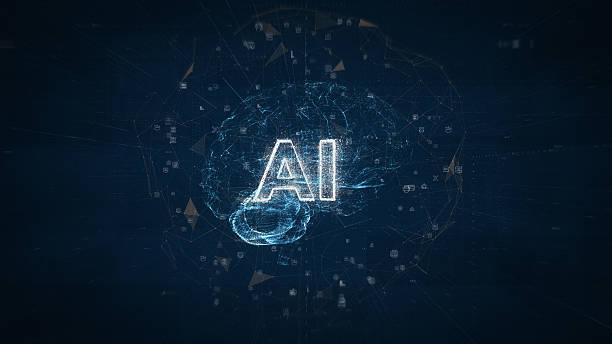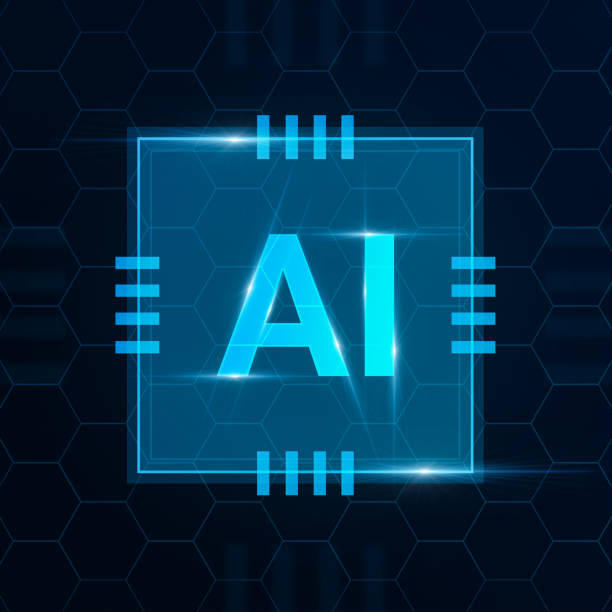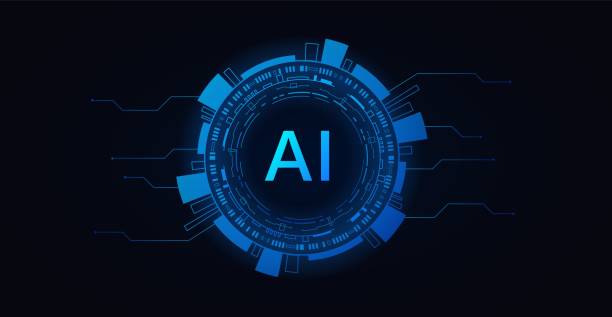What is Artificial Intelligence and what are its applications?

#Artificial_Intelligence or Artificial Intelligence (AI) is a branch of computer science that deals with building machines capable of performing tasks that usually require human intelligence.
These tasks include learning, reasoning, problem-solving, language understanding, and pattern recognition.
The main goal of AI is to build systems that can operate autonomously and intelligently, without the need for direct human intervention at every stage.
The applications of AI are very broad and are used in various fields such as medicine, finance, transportation, manufacturing, education, and entertainment.
For example, in medicine, AI can be used for diagnosing diseases, developing drugs, and providing personalized healthcare.
In the financial sector, AI algorithms can be used to detect fraud, manage risk, and provide financial advice.
In the transportation industry, self-driving cars are an example of AI application that can help improve transportation safety and efficiency.
AI, with its extensive capabilities, is gradually becoming a fundamental technology in our daily lives, and its role is expected to grow even further in the future.
The application of AI in medicine is transforming.
Are you worried about losing customers because you don’t have a professional e-commerce website?
With e-commerce website design by Rasawp, forget these worries!
✅ Significant increase in sales and conversion rate from visitor to customer
✅ Professional and user-friendly design that gains customer trust
⚡ Get free consultation from Rasawp
The History of Artificial Intelligence from its Beginning to Today

The history of Artificial Intelligence dates back to the 1950s, when scientists like Alan Turing and John McCarthy explored the possibility of building machines with human intelligence.
In 1956, a conference was held at Dartmouth College, which is considered a turning point in the history of AI.
At this conference, the term “Artificial Intelligence” was officially used for the first time, and the goals and challenges of this field were discussed.
In the 1960s and 1970s, research in AI was pursued with great enthusiasm, and significant progress was made in areas such as natural language processing and expert systems.
However, hardware and algorithmic limitations caused progress to be slower than expected, leading to what was known as the “AI winter.”
In the 1980s and 1990s, with the development of more powerful hardware and new algorithms, AI once again gained attention.
Machine learning and neural networks emerged as important approaches in this field, and the practical applications of AI increased in various domains.
Today, with significant advancements in deep learning and access to big data, Artificial Intelligence is rapidly progressing and has a significant impact on our lives.
AI, using complex algorithms, seeks to imitate human intelligence.
Types of Artificial Intelligence and Their Differences

Artificial intelligence can be divided into different types based on their capabilities and functions.
One common classification divides AI into Narrow AI and General AI.
Narrow AI refers to systems designed to perform a specific task and perform well in that particular area, but cannot operate in other areas.
Examples of Narrow AI include facial recognition systems, voice assistants like Siri and Alexa, and recommendation algorithms on social media.
In contrast, General AI refers to systems that have the ability to understand, learn, and perform any task a human can.
General AI has not yet been fully realized and is one of the main goals of AI research.
Furthermore, AI can also be categorized based on how they learn and operate.
Supervised learning, unsupervised learning, reinforcement learning, and deep learning are among the common approaches in machine learning, each with its own specific characteristics and applications.
Ultimately, choosing the right type of Artificial Intelligence depends on the specific needs and goals of each project.
AI is increasingly penetrating our lives.
| Type of Artificial Intelligence | Description |
|---|---|
| Narrow AI | Designed to perform a specific task |
| General AI | Ability to perform any task a human can |
Machine Learning and Its Role in Artificial Intelligence

Machine Learning is an important subfield of Artificial Intelligence that enables systems to learn from data and improve their performance without explicit programming.
In fact, instead of being given precise instructions for a task, machine learning provides systems with large amounts of data, allowing them to discover patterns and relationships within the data and make decisions based on them.
There are various methods for machine learning, including Supervised Learning, Unsupervised Learning, and Reinforcement Learning.
In supervised learning, the system is trained using labeled data, meaning each data point has a label indicating the correct answer.
In unsupervised learning, the system is trained using unlabeled data and must automatically discover patterns and structures within the data.
In reinforcement learning, the system learns how to make the best decisions by trial and error, receiving rewards or penalties.
Machine learning plays a very important role in the development of Artificial Intelligence and enables systems to perform better in various fields such as image recognition, natural language processing, and robotics.
Machine learning allows systems to learn from their experiences and improve.
Are you worried that your company’s outdated website will drive away new customers? Rasawp solves this problem with modern and efficient corporate website design.
✅ Increases your brand’s credibility.
✅ Helps attract targeted customers.
⚡ Contact Rasawp for a free consultation!
Neural Networks and Deep Learning

Neural Networks and Deep Learning are among the most advanced approaches in the field of Artificial Intelligence that have achieved significant success in recent years.
Neural networks are computational models inspired by the structure of the human brain, consisting of many nodes (neurons) connected in different layers.
Each node applies an activation function to its input and sends the output to the nodes of the next layer.
Deep learning is a type of machine learning that uses deep neural networks (networks with many layers) to learn complex patterns and relationships in data.
Deep neural networks can automatically extract important features from data and do not require manual feature engineering.
Deep learning has been applied in various fields such as image recognition, natural language processing, speech recognition, and game development, and has significantly improved the performance of systems.
For example, deep neural networks have been used in facial recognition, machine translation, and self-driving cars, providing excellent results.
Neural networks and deep learning play a very important role in the development of AI and are expected to achieve further progress in the future.
AI, using neural networks, aims to simulate the function of the human brain.
Applications of Artificial Intelligence in Everyday Life

Artificial Intelligence has increasingly permeated our daily lives, and its applications are visible in various fields.
Common applications of AI include voice assistants like Siri and Alexa, which can answer our questions, play music, set reminders, and perform many other tasks.
Recommendation systems on social media and online stores also use Artificial Intelligence to suggest relevant products and content to users.
Self-driving cars are another example of AI application that can help improve transportation safety and efficiency.
In medicine, AI can be used for diagnosing diseases, developing drugs, and providing personalized healthcare.
In the manufacturing industry, smart robots can be used to perform repetitive and dangerous tasks, helping to improve productivity and reduce costs.
In the financial sector, AI algorithms can be used to detect fraud, manage risk, and provide financial advice.
Overall, AI is becoming a fundamental technology in our daily lives, and its role is expected to grow even further in the future.
AI helps us lead more comfortable lives.
Advantages and Disadvantages of Artificial Intelligence

Artificial Intelligence, like any other technology, has its own advantages and disadvantages.
Among the advantages of AI are increased efficiency and productivity, reduced errors, improved accuracy, provision of innovative solutions, and performance of dangerous tasks.
AI can help humans automate tasks that are difficult, dangerous, or repetitive for them, allowing them to devote their time and energy to more creative and important work.
However, AI also has drawbacks.
Among the disadvantages of AI are the high cost of development and implementation, the need for large datasets, the potential for discrimination, job displacement, and ethical concerns.
AI can lead to the loss of jobs that can be automated, which can result in increased unemployment and inequality.
Also, the use of AI in important decision-making can lead to discrimination, especially if the data used to train the system is biased.
Furthermore, there are ethical concerns regarding the use of AI in areas such as autonomous weapons and pervasive surveillance.
Therefore, to leverage AI responsibly and ethically, its advantages and disadvantages must be considered, and efforts should be made to minimize its drawbacks.
AI requires careful and responsible management.
| Advantages | Disadvantages |
|---|---|
| Increased efficiency and productivity | High development and implementation costs |
| Reduced errors and improved accuracy | Need for large datasets |
| Provision of innovative solutions | Potential for discrimination |
| Performance of dangerous tasks | Job displacement |
| – | Ethical concerns |
Challenges Facing AI Development
![]()
The development of Artificial Intelligence faces numerous challenges that must be overcome for this technology to advance.
One of the main challenges is the scarcity of labeled data.
Many machine learning algorithms require labeled data for training, but collecting and labeling data can be time-consuming and costly.
Another challenge is the interpretability of AI models.
Many deep learning models, especially deep neural networks, are known as “black boxes,” meaning it is difficult to understand how these models arrived at a particular result.
This can create problems in fields such as medicine and law, where explanations and justifications for decisions are required.
Another challenge is the generalizability of AI models.
Many models trained on a specific dataset cannot perform well on other datasets.
This can create problems in fields such as robotics, where robots must be able to operate in different environments.
In addition, there are ethical and social challenges that must be considered in AI development.
AI development must be designed to benefit society and prevent discrimination and inequality.
AI must be designed to be reliable and controllable, preventing its misuse.
AI faces numerous technical and ethical challenges.
Are you frustrated with the low conversion rate of your online store?
Rasawp, with professional e-commerce website design, is your definitive solution!
✅ Increases your sales and revenue
✅ Provides an unparalleled user experience for your customers
⚡ Get a free consultation now!
The Future of Artificial Intelligence and Its Impact on the World

The future of Artificial Intelligence is very bright and full of potential, and this technology is expected to achieve significant advancements in the coming years.
AI can have a profound impact on the world and change our lives in many ways.
In the future, AI can find wider applications in various fields such as medicine, education, transportation, manufacturing, and entertainment.
AI can assist doctors in diagnosing diseases, developing drugs, and providing personalized healthcare.
AI can help teachers provide personalized education and create more engaging learning environments.
AI can help improve transportation safety and efficiency and turn self-driving cars into a reality.
AI can help improve productivity and reduce costs in the manufacturing industry.
AI can help create more entertaining and engaging experiences in the entertainment industry.
However, for responsible and ethical utilization of Artificial Intelligence, the challenges facing this technology must be considered, and efforts should be made to minimize its drawbacks.
AI development must be designed to benefit society and prevent discrimination and inequality.
AI must be designed to be reliable and controllable, preventing its misuse.
AI can shape a better future for us.
How to Learn Artificial Intelligence?

Learning Artificial Intelligence can be an exciting and challenging journey, but with the right approach and continuous effort, you can succeed in this field.
The first step to learning AI is to have a strong foundation in mathematics and computer science.
You should be familiar with basic mathematical concepts such as linear algebra, calculus, and statistics.
Also, you should be familiar with basic computer science concepts such as algorithms, data structures, and programming.
After you have a strong foundation in mathematics and computer science, you can start learning the fundamental concepts of AI.
You can use online courses, books, articles, and other educational resources to learn the basic concepts of AI.
Once you have learned the basic concepts of AI, you can start working on practical projects.
Working on practical projects will help you apply theoretical concepts in practice and strengthen your skills in the field of AI.
You can start with simple projects such as image recognition, natural language processing, and robotics, and gradually move on to more complex projects.
Also, you can participate in online AI communities and learn from the experiences of others.
AI is a dynamic and evolving field, so you should always continue learning and stay updated with the latest advancements in this area.
AI requires continuous learning and persistent effort.
Frequently Asked Questions
| Question | Answer |
|---|---|
| 1. What is Artificial Intelligence (AI)? | It is a branch of computer science that aims to create machines capable of simulating human intelligence and performing tasks that require human thinking, such as learning, problem-solving, and decision-making. |
| 2. What are the main types of Artificial Intelligence? | They can be classified into Narrow AI, which focuses on a specific task; General AI, which possesses comprehensive human capabilities; and Super AI, which surpasses human intelligence. |
| 3. Mention some common applications of Artificial Intelligence in our daily lives. | These include voice assistants (such as Siri and Alexa), recommendation systems (such as Netflix and Amazon), self-driving cars, facial recognition systems, and spam filters. |
| 4. What is the difference between Artificial Intelligence and Machine Learning? | Artificial Intelligence is the broader concept of creating intelligent machines, while Machine Learning is a subset of AI that focuses on enabling systems to learn from data without explicit programming. |
| 5. What is Deep Learning? | It is a subset of Machine Learning that uses multi-layered artificial neural networks (deep neural networks) to process data and discover complex patterns, and is used in image and speech recognition. |
| 6. What are the most prominent benefits of Artificial Intelligence? | Improved efficiency and productivity, automation of repetitive tasks, better decision-making based on big data analysis, and the development of solutions for complex problems in fields such as medicine and science. |
| 7. What are the main challenges facing the development and deployment of Artificial Intelligence? | These include the need for massive amounts of high-quality data, privacy and security issues, bias in data and algorithms, and high development and maintenance costs. |
| 8. Does Artificial Intelligence raise ethical or social concerns? | Yes, it raises concerns related to privacy, algorithmic bias, job displacement due to automation, responsibility for errors made by intelligent systems, and the need for a regulatory framework. |
| 9. How can Artificial Intelligence affect the future of the job market? | It can lead to the automation of some routine jobs, but it will also create new jobs requiring advanced skills in the development, operation, and maintenance of AI systems. |
| 10. What are some recent or promising technologies in the field of Artificial Intelligence? | These include advanced Natural Language Processing (NLP) (such as large language models like ChatGPT), computer vision, robotics, and Generative AI. |
And other advertising services by Rasawp Advertising Agency:
- Smart Brand Identity: A creative platform to improve click-through rates with attractive UI design.
- Smart Sales Automation: A dedicated service for increasing website visits based on attractive UI design.
- Smart SEO: Designed for businesses seeking to increase click-through rates through marketing automation.
- Smart UI/UX: An effective tool for digital branding with the help of real data.
- Smart Content Strategy: A new service to increase customer acquisition through custom programming.
And over hundreds of other services in the field of internet advertising, advertising consulting, and organizational solutions.
Internet Advertising | Advertising Strategy | Advertorials
Sources
What is Artificial Intelligence? Complete Guide
Everything About Artificial Intelligence in Iran
Applications of Artificial Intelligence in Everyday Life
The Future of Artificial Intelligence and its Challenges
? To reach the peaks of success in the digital world, Rasawp Afarin Digital Marketing Agency, with expertise in SEO, content creation, and user-friendly website design, paves the way for your business growth.
📍 Tehran, Mirdamad Street, next to Bank Markazi, Southern Kazeroon Alley, Ramin Alley, No. 6

